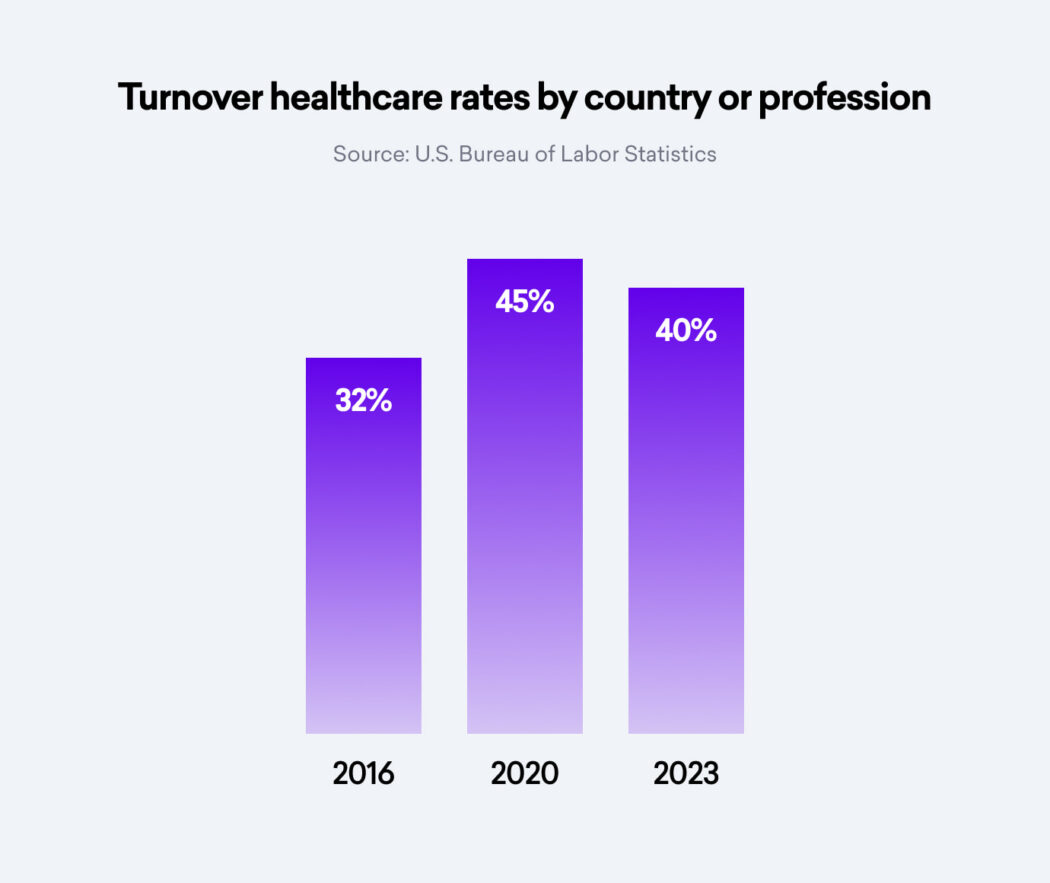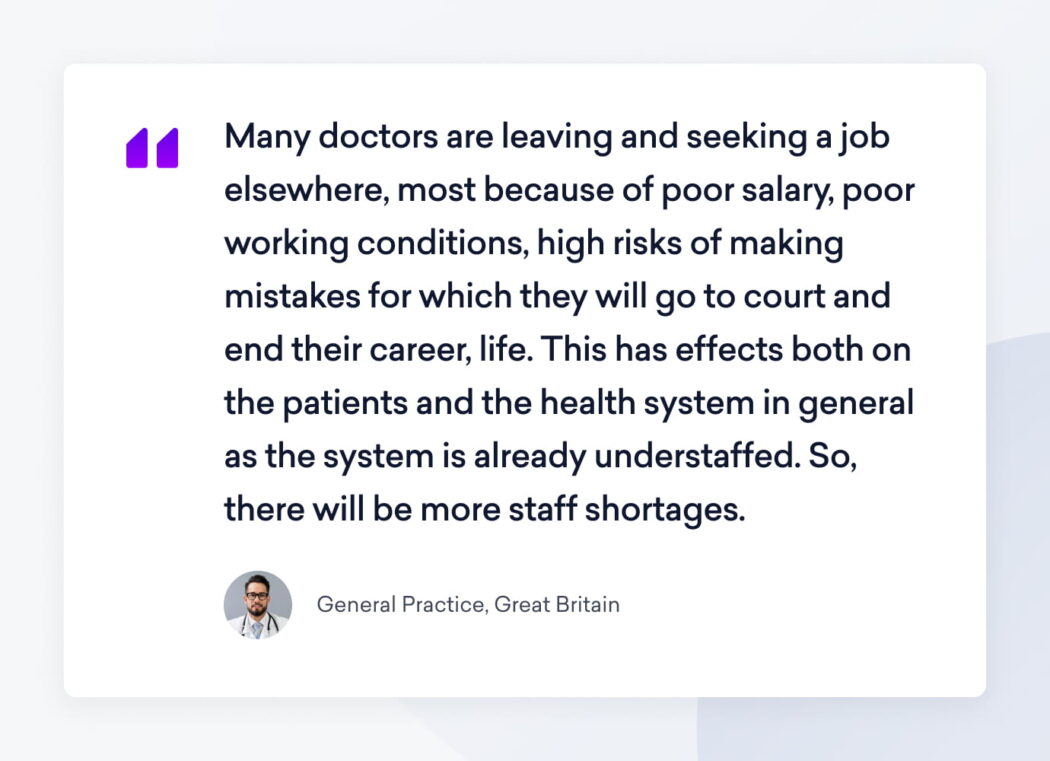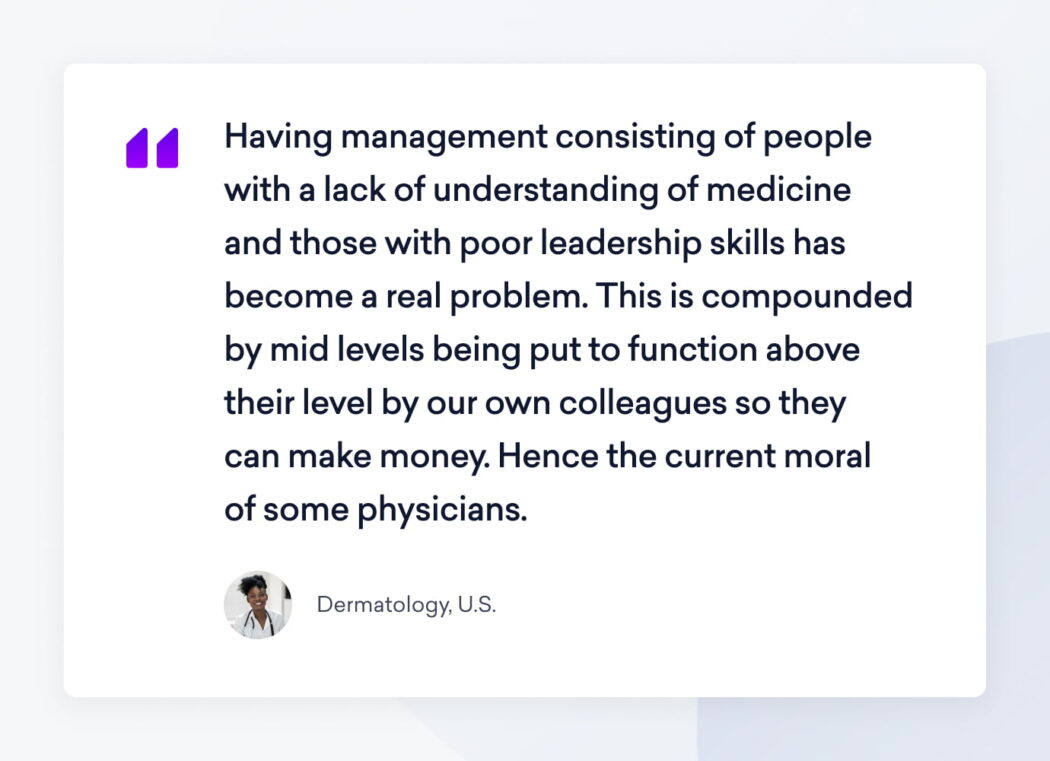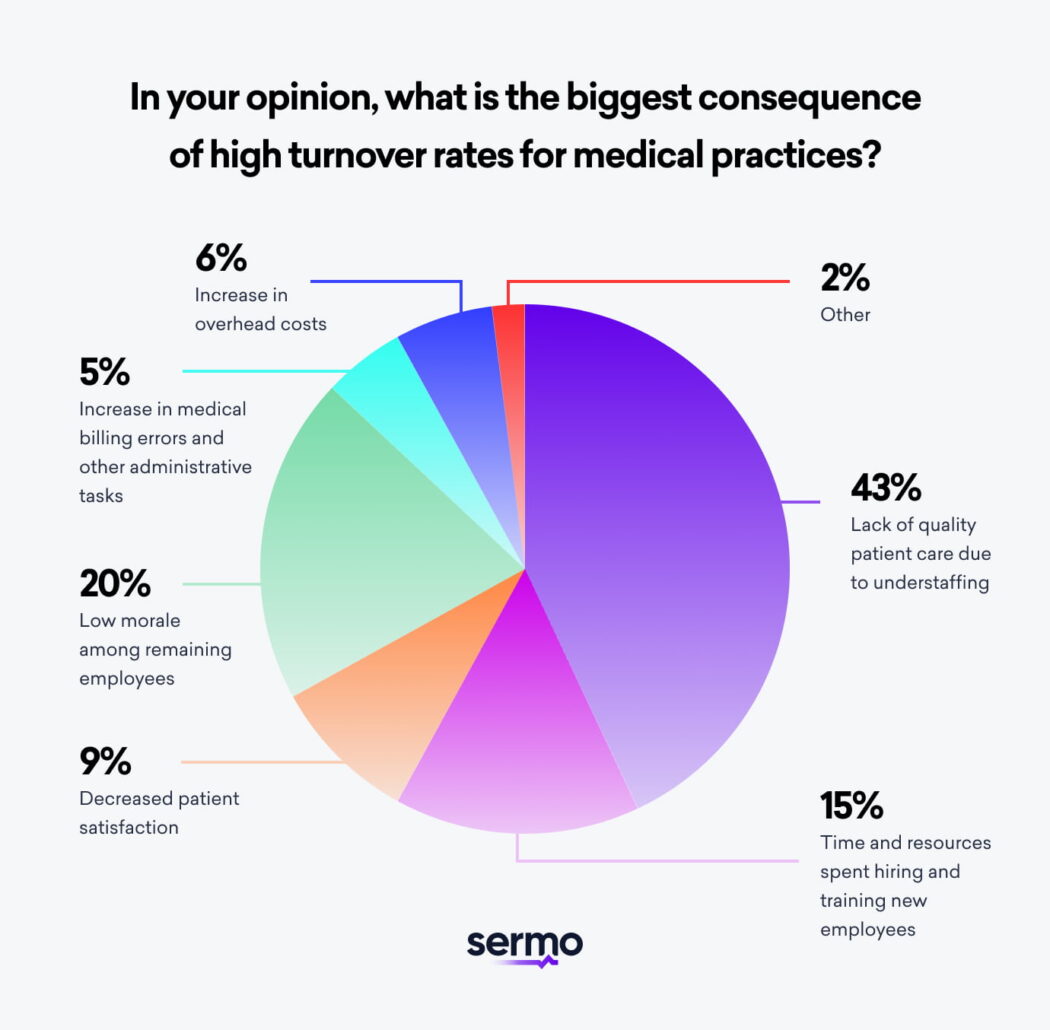
Did you know that 48% of all healthcare professionals have, or are currently, considering resigning from their job? Nearly half! And shockingly, that number is predicted to grow. This is causing medical understaffing, stretched shifts, and deteriorating patient care across the world.
There’s a reason many of us have already heard that we are living through the “Great Resignation”, a period of unprecedented resignation across most industries. And above-average turnover in healthcare is not a new issue. But the latest research shines a discerning light on just how significant the impact is on medical practices and the quality of care they provide. The data is in, and employee retention in healthcare has reached critical levels, demanding attention from management.

Sermo is here to help unpack this urgent topic for physicians and healthcare professionals so you can make smarter decisions in your career and business.
Today you will learn:
- The importance of employee retention in healthcare. Highlighting the financial, professional, and patient-related implications.
- The leading causes of employee turnover.
- Common obstacles to avoid when focusing on increasing employee retention in healthcare.
- How to successfully execute employee retention strategies that are effective, measurable, and practical.
According to the U.S. Bureau of Labor Statistics1, the turnover rate for healthcare professionals was nearly 32% in 2016. By 2020, that figure had risen to 45%. Experts now estimate it to be hovering around 40%.

Why employee retention is so important
To frame retention in financial terms, annually 4 out of every 10 healthcare professionals will flat-out quit. If we use the average cost of turnover of one medical employee is equal to $65,000 (1 x average annual salary and wages), the cost of turnover for a medical business even with only 10 employees with a 40% rate of turnover is costing you over a quarter million dollars every year!
Did you know, at the current rate of turnover, medical practices have to replace their staff every 2.5 years?2
In our recent Sermo survey, we found that physicians reported stress/burnout as the primary contributor to turnover in the healthcare industry. Other factors documented by physicians for the high turnover rate3 among healthcare workers include an aging workforce, gaps in pay or benefits, burnout, and a lack of educational or advancement opportunities.4 While the problem has many factors, action can (and should) be taken by healthcare practice managers to reverse this negative trend.


So, what is at risk with employee retention rates? When employee turnover is chronically high, it disrupts patient relationships and harms productivity and morale within the practice.

Retaining valued employees can help to ensure staff remains productive and engaged as well as provide continuity of care for patients. With so much at stake, it is easy to see why focusing on healthcare retention strategies is so crucial in 2023. Here is what our own Sermo members had to say about retention strategies.
We asked Sermo physicians: In your opinion, what is the most effective healthcare employee retention strategy?
- 60% Offering better benefits (higher salary, more paid time off, flexible scheduling, etc.)
- 15% Collecting and taking action on employee feedback
- 9% Improving recruiting, onboarding and training processes
- 8% Providing more opportunities for advancement
- 6% Investing in employee engagement (providing CME opportunities, coaching, etc.)
- 3% Other
Below are the top proven strategies to increase employee retention in healthcare sourced from case studies, healthcare business experts, and what the latest research reveals.
Invest in employee engagement
Studies prove that employee engagement is a key indicator of job satisfaction5 and longevity. Engaged employees are more likely to be involved in decision-making, feel as if they are valued, and believe they have a stake in the organization.
Strategies for boosting employee engagement include:
Coaching and mentoring programs
These programs are vital for all healthcare providers: new employees and veterans alike. Any business can have a flashy mission statement or say that they are ’employee-focused’, but having specific advancement programs for employees proves that employers are invested in their staff’s career goals. Action trumps talk when engaging employees.
Encourage continuing education and certification
Most healthcare professions require continuing professional development, often referred to as continuing medical education (CME) credits or continuing education units (CEUs). Research has shown that providing continuing education units (CEUs) to healthcare professionals has a positive impact6 on patient outcomes. A study conducted by the University of Minnesota found that nurses who completed at least 15 CEUs per year had reduced medical error rates and improved patient care compared to those who did not. The same study also showed that those who completed 20 or more CEUs per year had the highest patient satisfaction scores on the healthcare team.
For more information on continuing medical education, review our article here. At the end of the day, the employees who perform the best and tend to stay for the longest are those that are most engaged.
Offer competitive wages and benefits
We asked physicians from around the world “what is the most effective healthcare employee retention strategy?” The top answer by far, with 60% of the total vote was offering better benefits (higher salary, more paid time off, flexible scheduling, etc.).
On average healthcare professionals work 48 hours per week, and in the cases of physicians it can be over 60 hours per week on average. Long hours are a known source of burnout across all jobs.7 And many in medicine do not feel they are fairly compensated for their work.
It’s no longer sufficient to offer bare-bone packages to your employees. They will go elsewhere if they do not feel valued. Period. A competitive salary, flexible hours, and additional benefits should be the standard for healthcare and are often the reasons many healthcare professionals quit if they are not met.

Improve recruiting, onboarding, and training
Many of us are aware of the so-called ‘leaky employee pipeline’ in healthcare. This name has arisen from the fact that 1 in 3 health professionals leave the industry within the first year. And there is a clear but often ignored culprit for this. When asked, the majority of medical employees feel like the typical onboarding and training processes at their work is either nonexistent or outdated. This leads to employees feeling overwhelmed and stressed from day one.
To remedy this, healthcare providers need to focus on investing in modern onboarding and training methods. This includes providing personalized checklists for each new hire, providing an employee handbook that is easy to understand, having clear goals and expectations for the position, and adding a mentorship program for more advanced roles. Do not forget to check in with your employees at least once per week quantitatively (through KPIs and metrics) as well as qualitatively (ask how things are going, how they are feeling, etc).
All of these will help employees become productive faster while instilling a sense of security and community. The most successful practices have a consistent and easily repeatable process for employee recruiting, onboarding, and training.
Regularly ask for (and act on) employee feedback
In the biggest landmark study of its kind Gallup announced that the most important factor in employee retention and satisfaction depended on the manager. In their book It’s The Manager employees shared what they are really looking for in a manager. They want a coach not a micromanaging boss, they want real advancement opportunities and they want to develop their skills.
One of the most effective healthcare employee retention strategies is to regularly ask for and act on feedback. There are countless ways to do this, from anonymous surveys to one-on-one interviews where employees can share their thoughts candidly. The key is to schedule a feedback session at least once a month with employees. Remember to not just ask for feedback but make a plan and take action as soon as possible.
Actively monitor and prevent employee burnout
Employee burnout is a serious issue in the healthcare industry, and if not addressed it will damage employee health and morale. The best way to prevent burnout is to actively monitor employees’ performance on an ongoing basis.
It goes beyond just scheduling adequate breaks and keeping track of work hours; managers should be proactive about monitoring employee stress levels and providing ways for employees to relieve stress. This could include things like flexible hours, employee wellness programs or off-site activities.
The healthcare industry is quickly changing and with it the need for healthcare employee retention strategies will help keep your team loyal and engaged.
Conclusion
By taking action to improve healthcare retention and employee engagement, healthcare practices can ensure their staff is invested in the organization and the patients they serve. With the right strategies in place, healthcare providers can be confident their staff is happy and productive while providing quality care to their patients. A satisfied team equals successful patient outcomes, and a healthy business bottom line – a win-win for everyone.
Looking for more employee retention strategies? Claim your complimentary invitation to become a Sermo member where you can stay up to date with the latest medical news, retention tips, drug reviews, case studies and more!















